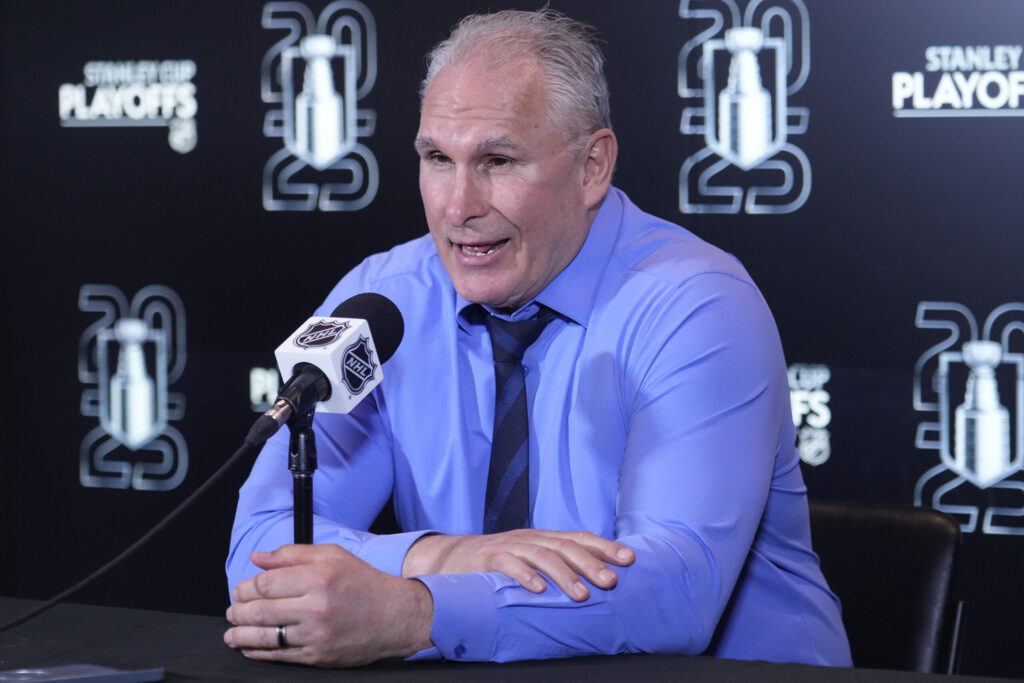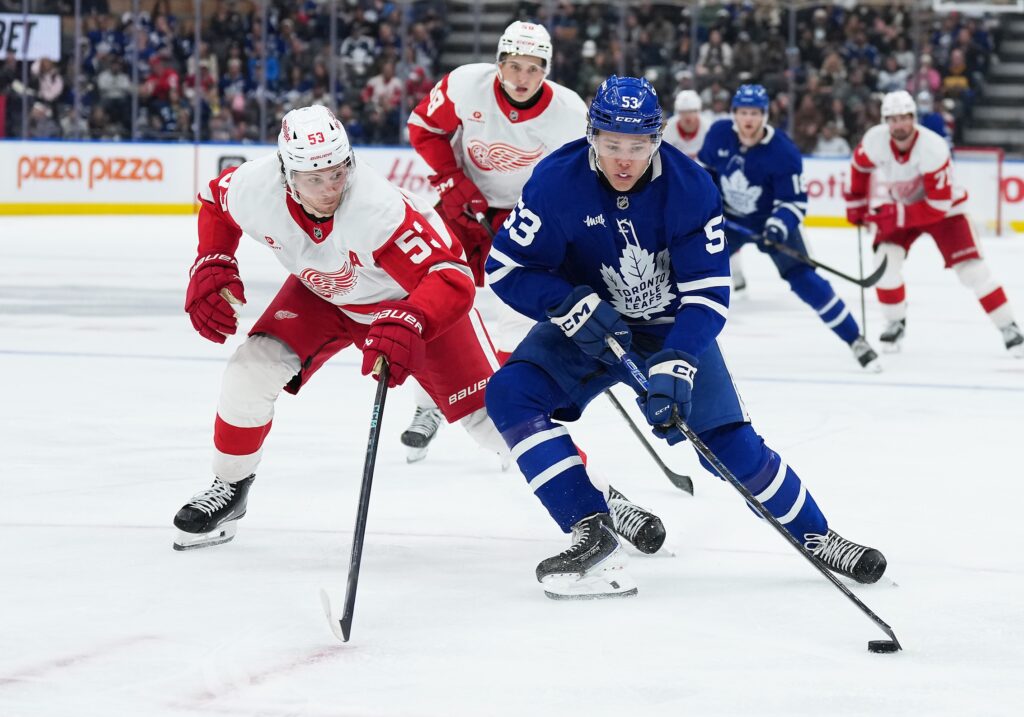In Toronto, the start of a new hockey season is always met with a familiar blend of fervent optimism and conditioned anxiety. This year, however, a new element has been added to the mix: a palpable, concentrated anticipation focused squarely on one player. Easton Cowan, the Maple Leafs’ first-round pick from 2023, is on the cusp of his NHL debut, and the organization’s meticulous, almost theatrical, handling of his arrival has turned a simple lineup decision into the city’s primary hockey subplot.
Also on the EDGE – The Maple Leafs’ Flawed Opening Night Victory: Rielly’s Renaissance & Berube’s Blueprint
The 20-year-old winger is with the team, he’s practicing, and by all accounts, he’s ready. Yet, as the puck dropped on the season opener, he was watching from the press box. The wait for Cowan is not a question of talent, but of timing, development, and a touch of salary cap artistry. For a fan base eager to see its prized prospect, the question is no longer if he will play, but precisely when, and what the carefully laid breadcrumbs from management and the coaching staff are telling us.
The Coach’s Conundrum: Playing Time vs. Patience
Maple Leafs head coach Craig Berube has been clear and consistent in his praise for the young forward. He has publicly lauded Cowan for his “great attitude” and hard work, affirming what many saw in training camp: this is a player who can help the Leafs. Berube has stated Cowan is “close” to making his debut, but the final decision remains a closely guarded secret, pending further discussion.

The core of the issue, however, lies in a philosophy that both Berube and General Manager Brad Treliving have championed. It’s a principle of developmental prudence. “I’ve got to make sure he’s not sitting out too long because he needs to play,” Berube emphasized. This sentiment echoes Treliving’s earlier comments that if Cowan isn’t logging steady minutes with the big club, his development is better served by playing a significant role elsewhere.
This is the tightrope the organization is walking. They believe he is good enough to be in the NHL, but they are unwilling to let him occupy a roster spot only to be a perennial healthy scratch. The decision to sit him for the opener against Montreal was framed as a chance for Cowan to get “acclimated with the regular season atmosphere first before throwing him to the wolves.” It was a calculated move to ease him in, but one that only intensified the focus on when he would finally be unleashed.
Cap Gymnastics and Paper Puzzles
For the casual observer, Cowan’s absence from the opening night roster was a simple lineup choice. For those who follow the intricacies of the NHL’s Collective Bargaining Agreement, it was a masterclass in salary cap optimization. The initial roster submitted to the league for compliance purposes featured forward Jacob Quillan, not Easton Cowan. This was no slight against the prized prospect; it was a strategic financial maneuver.
The move was necessitated by the need to place injured defenceman Marshall Rifai on Long-Term Injured Reserve (LTIR). To maximize the cap relief gained from this transaction, a team’s payroll must be as close to the upper limit as possible on the day the move is made. Quillan’s cap hit of $875,000 was a mere $1,500 higher than Cowan’s ($873,500). By including Quillan on the roster, the Leafs pushed their total cap charge that much closer to the ceiling, thereby creating a slightly larger LTIR relief pool to use for the remainder of the season.
A day later, the transaction was reversed. Quillan was sent down and Cowan was officially recalled. In previous years, this “paper transaction” might have required Cowan to be physically sent to the AHL and play a game. However, a clarification in the recent CBA extension allows for such moves before the AHL season officially begins, which it had not. It was a shrewd piece of business by the front office, securing maximum cap flexibility while ensuring their top prospect was available for NHL action without delay.
Reading the Practice Tea Leaves
With the cap machinations settled, all eyes turned to the ice at the team’s practice facility ahead of their next game against the Detroit Red Wings. It was here that the strongest signals of an imminent debut emerged.

Initially skating as an extra forward, Cowan was soon integrated into line rushes in a manner that is highly unusual for a player designated as a scratch. He was seen rotating onto the third line, taking reps alongside Max Domi, Dakota Joshua, and fellow young forward Nick Robertson. Furthermore, he was given a look on the second power-play unit, spelling off Robertson.
Coaches don’t typically give a player destined for the press box that level of integrated work, especially on special teams. This wasn’t just a courtesy to keep him engaged; it was a clear indication that Berube is actively considering how and where to insert him into the lineup. The move sparked considerable chatter, with TSN’s Chris Johnston suggesting Cowan is now “a good bet to play in game two in Detroit.” The fact that Cowan has some familiarity with the Red Wings, having faced them twice in the preseason, only adds fuel to that fire.
The Nine-Game Audition
When Cowan does step onto the ice, it will mark the beginning of a critical evaluation period. The winger, who dominated the Ontario Hockey League playoffs last season with 39 points in 17 games on his way to being named Memorial Cup MVP, has a nine-game window to make his case. Under NHL rules, a player on an entry-level contract can play up to nine games before the first year of that contract is officially “burned.”
This gives the Maple Leafs a risk-free trial period. They can assess how his high-energy, tenacious game translates to the NHL level against tougher competition without committing to a full season on his contract. The organization sees him as a potential top-six forward down the line, and these initial games will provide the first real data points to measure his progress toward that ceiling.
The wait for Easton Cowan is nearly over. The front office has navigated the cap, the coach has managed expectations, and the player himself has shown in practice that he is ready for the opportunity. All that remains is the official announcement. For a team and a city hungry for the next wave of talent, the countdown is on.
Created with the aid of Gemini AI
